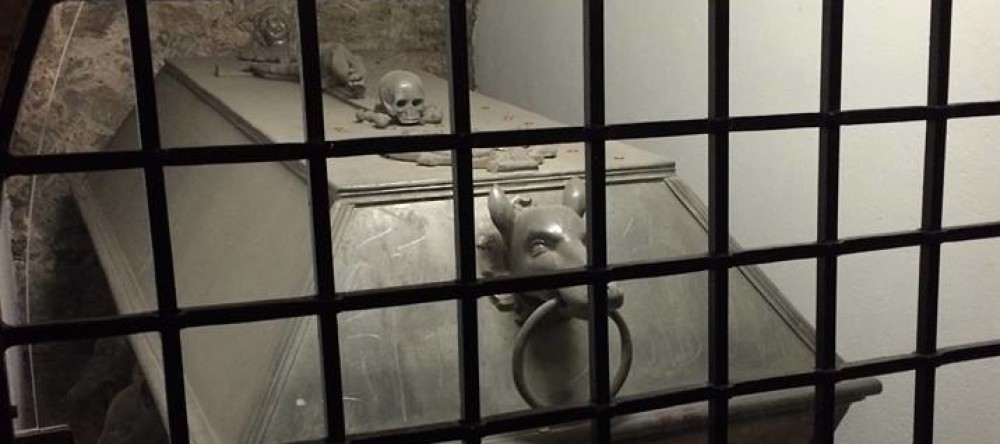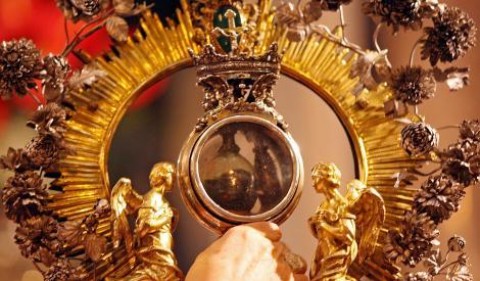This year’s festival of San Gennaro in New York’s Little Italy will be held on September 10-20, 2015. The festival marks one of the three days each year when the relic of St. Januarius’ blood in Naples liquefies during its display for public veneration. It turns out that there are other saintly blood relics in that part of Italy (surrounding Naples) that liquefy on the feast day of each particular saint, the most important being those of John the Baptist and Saint Panteleimon (a popular 4th century doctor-martyr).
The blood of the saint in question (usually an early martyr) is often sopped up with a cloth at the time of the saint’s execution and then placed in a glass ampule (small vial) which is then placed in a reliquary or monstrance for display [see the photo above]. On the feast day, the reliquary is brought out and the presiding cleric tilts the reliquary to demonstrate that the relic is dry and solid. He places the reliquary on the altar and the faithful celebrate the Eucharist or offer other prayers. At the conclusion, the presiding cleric again lifts the reliquary and tilts it, demonstrating that the relic has liquefied.
The first certain date of the liquefaction of St. Januarius’ blood is 1389. Over the following two and a half centuries official reports began to appear declaring that the blood spontaneously melted, at first once a year, then twice and finally three times a year. During times of distress, the relic would be carried in procession around Naples and has been credited with saving the city from explosions and eruptions from Mount Vesuvius.
Blood has always been considered an especially potent connection to the person whose blood it is. Blood was also considered the “life” of the person or animal and so to offer a few drops of blood in a rite was to offer the whole person or beast. Blood offerings were among the most valuable gifts to be offered to a god or goddess and the more blood offered, the more the god “owed” the worshipper. The more blood offered also usually meant the more horrific the request being made of the god or the more horrible the god who was being worshipped.
Blood was also said to give a temporary sort of life back to the dead. Among the ancient Greeks, ghosts were said to be whispering, gibbering shadows but if they licked up blood they could speak and think clearly again for at least some time.
A fascinating discussion of the blood relics in and around Naples can be read here.

